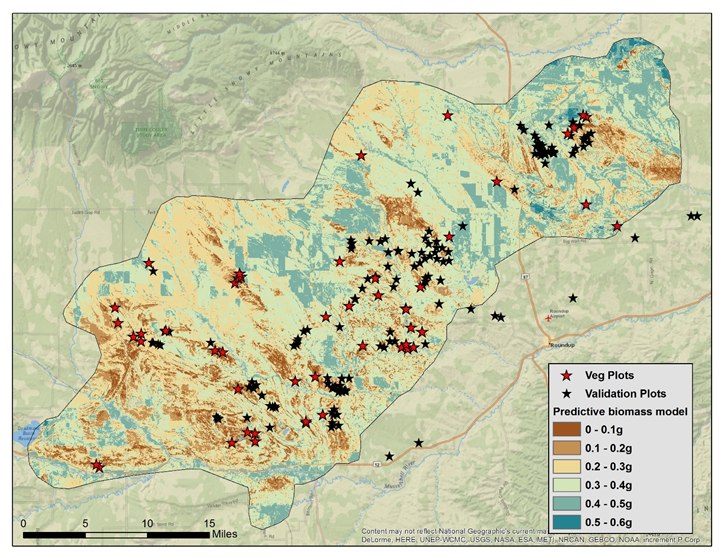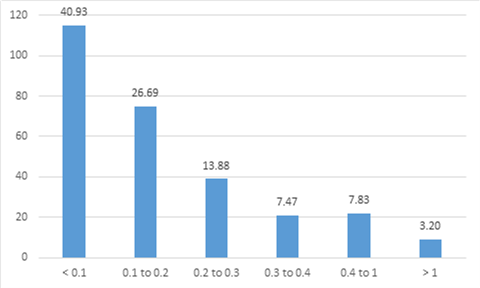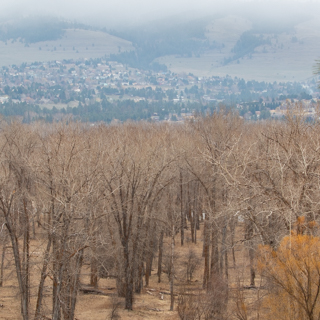Predicting Arthropod Distribution
Creating a Predictive Spatial Layer of Invertebrate Biomass in the Lake Mason Area
Project lead: Jessica Mitchell
Analyst: Claudine Tobalske
Sage-grouse conservation is currently a priority, as this species was a candidate for protection under the Endangered Species Act (ESA) in 2010 and 2015. Protein-rich invertebrates may be important for sage-grouse chick survival and their distribution may influence that of brooding hens. In addition, invertebrates are a mainstay of the diets of several of the songbird species found in this area that also are of conservation concern.
In 2018, we began a multi-year collaboration with Montana Fish, Wildlife & Parks involving field invertebrate sampling and creation of a predictive spatial layer of invertebrate biomass in the Lake Mason area of central Montana. We developed a first model in Random Forest using existing, 2012-2018 biomass data; a raster of bare ground generated form NAIP 2011 imagery guided the distribution of 2019 field samples. We recently finished analyzing these new data in the context of detailed field-based vegetation sampling but also through overlay with a variety of digital datasets (NAIP-derived classification from 2011, Sentinel 2 and Landsat-derived indices and products like NDVI or Gross Primary Production, LiDAR data); these confirmed the positive correlation between arthropod biomass and vegetation (and conversely its negative association with bare ground). The original biomass model did a fair job predicting 2019 biomass data, with two-thirds of field samples within 0.2g of model predictions.
The next, and last, field collection will start this spring (2020), with a focus on maximizing the spatial coverage of samples while simplifying the vegetation sampling protocol.
 For the Lake Mason study area near Roundup, Montana, arthropod field sampling sites from 2019 shown in relation to a predictive model of arthropod biomass generated from 2012-2018 biomass data.
For the Lake Mason study area near Roundup, Montana, arthropod field sampling sites from 2019 shown in relation to a predictive model of arthropod biomass generated from 2012-2018 biomass data.

Distribution of 2019 arthropod field samples based on the difference between field biomass and predicted biomass, with percent shown atop each bar.
